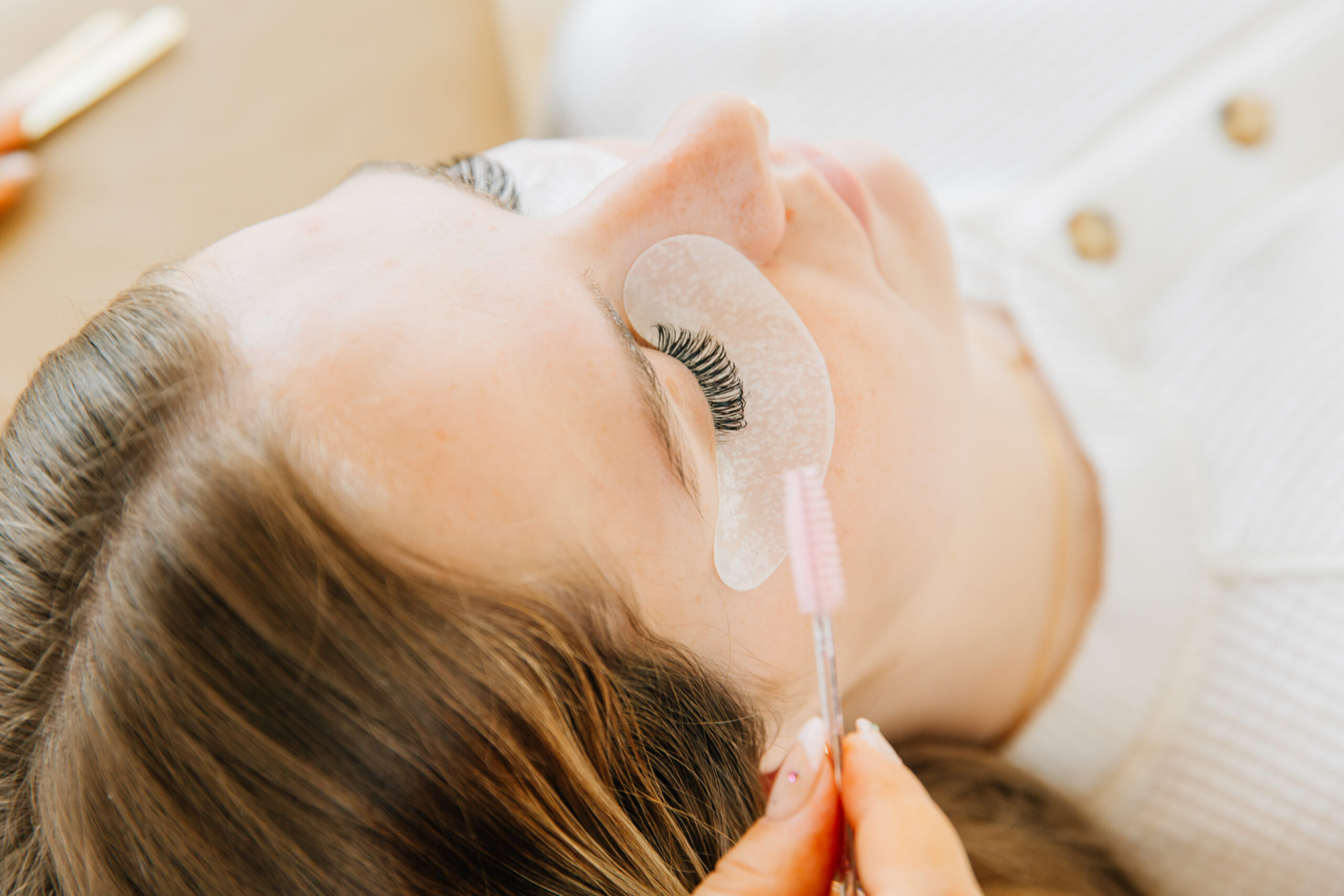Ear piercings have been a popular form of body modification for centuries. They allow individuals to express their personal style and add a touch of uniqueness to their appearance. However, with the myriad of options available, it can be overwhelming to choose the right type of ear piercing. In this ultimate guide, we will explore different types of ear piercings, the process of getting a piercing, choosing the right jewelry, and important health and safety considerations.
Understanding Different Types of Ear Piercings
When it comes to ear piercings, the possibilities are endless. From the classic lobe piercings to the more daring cartilage and industrial piercings, each type has its own unique charm. Let’s take a closer look at some of the most popular options:
Lobe Piercings
The lobe piercing is the most common and widely accepted form of ear piercing. It involves piercing the soft, fleshy area at the bottom of the earlobe. Lobe piercings are versatile and can be adorned with a variety of jewelry, such as studs, hoops, or dangles.
Cartilage Piercings
Cartilage piercings are becoming increasingly popular among those seeking a more unique and edgy look. This type of piercing involves piercing the harder tissue of the ear, which gives it a more prominent and daring appearance. Some popular cartilage piercings include helix, tragus, and conch piercings.
Industrial Piercings
Industrial piercings are a bold statement. This type of piercing involves two piercings connected by a long barbell, creating an industrial look. The most common placement for an industrial piercing is the upper cartilage of the ear. It’s important to note that industrial piercings require proper aftercare due to their complex nature.
Daith Piercings
Daith piercings have gained popularity in recent years due to their unique placement and aesthetic appeal. This piercing is done on the innermost cartilage fold of the ear. Many people believe that daith piercings can help alleviate migraines, although scientific evidence is limited.
Aside from these popular ear piercings, there are several other options to explore. One such option is the rook piercing, which involves piercing the cartilage fold above the tragus. This piercing can be adorned with small and delicate jewelry, adding a touch of elegance to your ear.
If you’re looking for a more unconventional piercing, you might consider the snug piercing. This piercing is done through the inner cartilage ridge parallel to the outer rim of the ear. It’s a unique and eye-catching choice that can be customized with various jewelry styles.
For those who want to make a statement, the orbital piercing is a great choice. This piercing involves two holes connected by a single piece of jewelry, creating a stunning visual effect. The jewelry can be a hoop or a barbell, depending on your personal style.
When deciding on an ear piercing, it’s important to consider factors such as pain tolerance, healing time, and aftercare requirements. Consulting with a professional piercer can help you make an informed decision and ensure a safe and successful piercing experience.
The Process of Getting an Ear Piercing
Before you rush to get your desired ear piercing, it’s crucial to understand the process involved and ensure you’re well-prepared for it.
Pre-Piercing Consultation
Before the actual piercing, it’s essential to have a consultation with a professional piercer. During this consultation, they will evaluate your ear’s anatomy and discuss which piercing options are best suited for you. They will also provide information about the piercing process, aftercare, and any potential risks.
When you arrive for your consultation, you’ll be greeted by a friendly and knowledgeable piercer who will put you at ease. They will take the time to carefully examine your ear, considering factors such as the shape, size, and placement of your desired piercing. This evaluation is crucial as it helps determine the most suitable piercing option for you.
Once the piercer has assessed your ear, they will guide you through the various piercing options available. Whether you’re interested in a classic lobe piercing, a trendy helix piercing, or something more unique like a tragus or conch piercing, they will provide expert advice on what would work best for your individual style and anatomy.
The Piercing Procedure
Once you’ve chosen your desired ear piercing and completed the consultation, it’s time for the piercing procedure itself. The piercer will cleanse the area and mark the precise location of the piercing. They will then use a sterilized needle or a piercing gun to create the hole, followed by carefully inserting the jewelry of your choice.
During the piercing procedure, the piercer will ensure that all necessary precautions are taken to maintain a sterile environment. They will use single-use, disposable needles or sterile piercing guns to minimize the risk of infection. The piercer’s steady hands and expertise will ensure that the piercing is done swiftly and with minimal discomfort.
As the needle or piercing gun creates the hole, you may feel a quick pinch or pressure. However, rest assured that the process is relatively quick, and any discomfort is temporary. The piercer will then insert the jewelry, which may include studs, hoops, or other decorative pieces, depending on your preference.
Aftercare and Healing
After the piercing, proper aftercare is crucial for ensuring smooth healing and preventing complications. The piercer will provide you with detailed instructions on how to clean the piercing, how to avoid infection, and how to handle any discomfort. It’s important to follow these instructions diligently to promote healthy healing.
Aftercare typically involves cleaning the piercing with a saline solution or a gentle, fragrance-free cleanser. You may also need to avoid swimming, excessive touching, and certain hair products that could irritate the piercing. The piercer will guide you on how long you should continue with the aftercare routine and when you can change your jewelry.
Remember, healing times can vary depending on the type of piercing and your individual healing process. It’s essential to be patient and avoid rushing the healing process to minimize the risk of complications. If you have any concerns or questions during the healing period, don’t hesitate to reach out to your piercer for guidance and reassurance.
Choosing the Right Jewelry for Your Piercing
The jewelry you select for your ear piercing plays a significant role in enhancing its overall appearance and ensuring comfort. Here are some factors to consider when choosing the right jewelry:
Material Considerations
When it comes to ear piercing jewelry, opt for hypoallergenic materials such as surgical stainless steel, titanium, or 14-karat gold. These materials are less likely to cause allergic reactions or irritations.
Let’s dive deeper into these materials. Surgical stainless steel is a popular choice due to its durability and affordability. It is resistant to corrosion and tarnishing, making it suitable for long-term wear. Titanium, on the other hand, is known for its lightweight nature and hypoallergenic properties, making it an excellent option for those with sensitive skin. Lastly, 14-karat gold combines elegance and hypoallergenic qualities, making it a timeless choice for ear piercings.
Size and Style Choices
The size and style of your jewelry depend on your personal taste and the type of piercing you have. For example, smaller studs or hoops are great for lobe piercings, while larger and more elaborate designs can be used for cartilage piercings.
When it comes to size, it’s important to consider the thickness of the jewelry as well. Thicker gauges are commonly used for industrial piercings, while thinner gauges are suitable for tragus or helix piercings. Additionally, the style of the jewelry can vary from simple and minimalist designs to intricate and ornate patterns, allowing you to express your individuality and complement your overall style.
Changing Your Piercing Jewelry
It’s essential to give your piercing adequate time to heal before changing the jewelry. Once the healing process is complete, you can experiment with different styles and materials. However, it’s crucial to practice proper hygiene and use sterilized tools when changing your jewelry to prevent infections.
When changing your piercing jewelry, consider the occasion or the look you want to achieve. You can opt for dainty and elegant pieces for a formal event or go for bold and statement-making jewelry to showcase your personality. Remember to clean your new jewelry thoroughly before inserting it into your piercing to maintain hygiene and minimize the risk of complications.
Health and Safety Considerations
While ear piercings are generally safe when performed by a professional, it’s essential to be aware of potential risks and prioritize your health. Here are some important health and safety considerations:
Risks and Complications
Ear piercings carry a risk of infection, bleeding, allergic reactions, and keloid formation. To minimize these risks, always choose a professional piercer, ensure proper hygiene during aftercare, and follow their instructions diligently.
Importance of Professional Piercing Services
Choosing a professional piercer is crucial to minimize the risk of complications. Professional piercers have the necessary knowledge, experience, and sterile equipment needed to ensure safe and successful piercings.
Signs of Infection and What to Do
It’s important to keep an eye out for signs of infection, such as increased pain, redness, swelling, or discharge. If you notice any of these symptoms, contact your piercer or a healthcare professional for further guidance and assistance.
Now that you have a comprehensive understanding of different types of ear piercings, the piercing process, choosing the right jewelry, and important health and safety considerations, you can make informed decisions and enjoy your ear piercing journey with confidence.


Leave a Reply